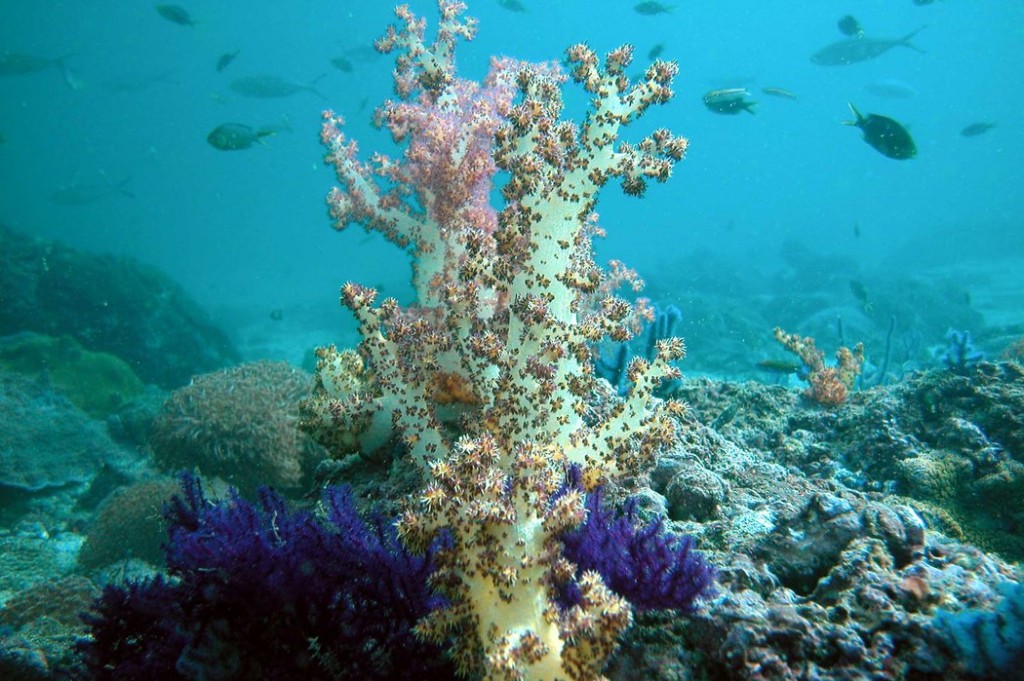June 5th, 2014, By Carl Zimmer, The New York Times
After Hurricane Katrina devastated New Orleans, the United States Army Corps of Engineers got to work on a massive network of levees and flood walls to protect against future catastrophes. Finally completed in 2012, the project ended up costing $14.5 billion — and that figure didn’t include the upkeep these defenses will require in years to come, not to mention the cost of someday replacing them altogether.
But levees aren’t the only things that protect coasts from storm damage. Nature offers protection, too. Coastal marshes absorb the wind energy and waves of storms, weakening their impact farther inland. And while it’s expensive to maintain man-made defenses, wetlands rebuild themselves.

Coral reefs have proved valuable to coastal regions by helping to blunt shore erosion from storm waves. – Reuters
Protection from storms is just one of many services that ecosystems provide us — services that we’d otherwise have to pay for. In 1997, a team of scientists decided to estimate how much they are actually worth. Worldwide, they concluded, the price tag was $33 trillion — equivalent to $48.7 trillion in today’s dollars. Put another way, the services ecosystems provide us — whether shielding us from storms, preventing soil erosion or soaking up the greenhouse gases that lead to global warming — were twice as valuable as the gross national product of every country on Earth in 1997.
“We basically said, ‘It’s an imprecise estimate, but it’s almost definitely a pretty big number, and we’ve got to start paying attention,’” said Robert Costanza, a professor at Australian National University who led the study.
That study proved to be hugely influential. Many governments, from Costa Rica to the United Kingdom, started to take the value of ecosystem services into account when they planned environmental policies. But the study also set off a lot of controversy. Some economists argued that it was based on bad economics, while some conservation biologists argued that price tags were the wrong way to save ecosystems.
Seventeen years later, the debate is getting re-energized, just as the nation becomes immersed in an intense fight over the Obama administration’s attempt to tackle the emissions that scientists say could threaten many of these ecosystems. Dr. Costanza and his colleagues have now updated the 1997 estimate in a new study, published in the May issue of the journal Global Environmental Change, and concluded that the original estimate was far too low. The true value of the services of the world’s ecosystems is at least three times as high, they said.
“As we learn more, these estimates increase,” Dr. Costanza said.
That’s putting it mildly. The enormous rise in the price tag stems from hundreds of new studies carried out on ecosystems around the world. Taken as a whole, these studies reveal that ecosystems do more for us than Dr. Costanza and his colleagues could appreciate in 1997.
Coral reefs, for instance, have proved to be much more important for storm protection than previously recognized. They also protect against soil erosion by weakening waves before they reach land. As a result, Dr. Costanza and his colleagues now consider the services provided by coral reefs to be 42 times more valuable than they did in 1997. They estimate that each acre of reef provides $995,000 in services each year for a total of $11 trillion worldwide.
Most of the 17 services that Dr. Costanza and his colleagues analyzed in 16 different kinds of ecosystems — including tropical forests, mangroves and grasslands — also turned out to be more valuable. When they added up all their new figures, they came up with a global figure of $142.7 trillion a year (in 2014 dollars).
Read more here
